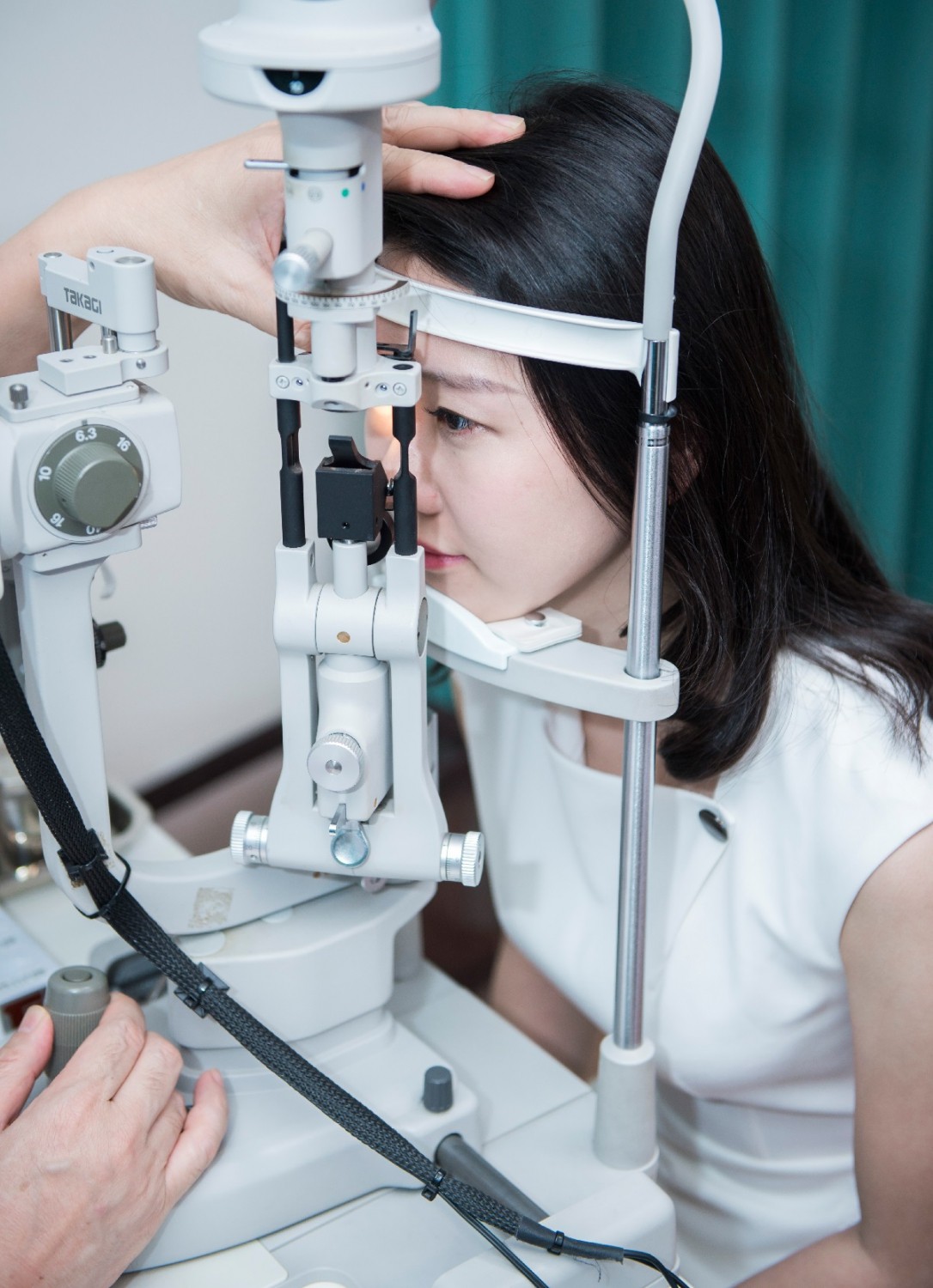The surgical treatments of refractive errors can help those with myopia (nearsightedness), hyperopia (farsightedness) or astigmatism regain their vision. However, to determine whether their eye is eligible for a surgery or not and which surgical procedure is suitable and provide post-operative prognosis, the patient needs to undergo preliminary examination before surgery.
RECOMMENDED INDIVIDUALS
- Those of 18 – 45 years old, with myopia, hyperopia or astigmatism.
- Wishing to take examination to be consulted about surgery for refractive errors
- Having no eye diseases at the time of examination.
- In case of use of contact lenses, you should stop using them at least 2 weeks for soft contact lenses or 1 month for hard contact lenses to get accurate test results.
- In case you have high myopia (at least 6 diopters), you will be applied with dilation eye drops to check the retina for any retinal degeneration. This type of drop will make your vision blurred for around 4 – 6 hours, so you are not recommended to drive home by yourself.
Our preliminary examination before refractive surgery consists of 06 steps below which follow the Japanese standard procedure:
Automatic measurement of eye pressure and refraction
The refkeratometer will use your eye accommodation to calculate your refractive index. This result may be higher or equal to the degree of your current glasses. The difference, if any, is due to difference in eye accommodation during fatigue, stress, and relaxation. This refkeratometer also functions to measure your eye pressure. This step helps preliminary assess your refractive index as well as eye accommodation and pressure.
Subjective vision test by experienced optometrists
In this step, the optometrist will use various forms of eye function tests to figure out your maximum vision in case you have a refractive error. This is the most time-consuming step in the entire intensive vision test, around 20 – 30 minutes/patient, in order to define all refractive indexes and expected maximum vision after the surgery.
- 3D Vision Chart Eye Test : to objectively assess your maximum vision
- +1 diopter and -1 diopter test: to accurately define your current maximum refractive index
- The Duochrome test: to test whether your current glasses fit his/her current refractive index, and adjust your glasses accordingly.
- Worth’s Four Dot test : to test and determine double vision (diplopia) or suspected squint (strabismus) on your eyes.
- Contrast Sensitivity test: to test visual acuity in different light conditions, thereby helping assess your post-operative visual quality.
- Visual combination test: to test visual combination of both of your eyes.
Skiascopy by optometrist
The skiascopy is performed by a Skiascope which is a technique to objectively determine the refractive error of the eye and check if the current refractive index of glasses is correct or not, thereby correcting them
This step is carried out on the Atlas linked Visante system (Carl Zeiss): Atlas machine which is used to measure the corneal topography is linked with Visante machine which is used to assess the eye anatomy. It helps evaluate whether the corneal is suitable to perform a Lasik, ReLEx SMILE or Phakic surgery. In addition, the system also scans the anterior part of the eyeball, depth of the anterior angle to determine the conditions required for implanting Phakic lenses.
In case you have high myopia (above 6 diopters), you will undergo additional measurement of your eyeball axis, anterior chamber depth and width using IOL Master to evaluate your eye suitability with Phakic surgery. You also undergo pupil dilation step to detect retinal degeneration.
Based on your tested results, our ophthalmologists give you detailed consultation on your eye condition, advise suitable approaches, and post-operative prognosis. By getting consulted, you will know your eye conditions and make your own decision.
The Japan International Eye Hospital with modern equipment and facilities, Japanese standard examination procedures, a team of experienced doctors will provide accurate diagnoses and optimal treatment indications for your eyes.
*Notes:
- If contact lenses are being used, patients should stop using them at least 2 weeks before the examination date with soft contact lenses or 1 month with Ortho-K lenses for accurate vision test parameters.
- Patients will have near-blur vision 4-6 hours after dropping pupil dilator or accommodation paralysis, should not self-drive after the examination.

